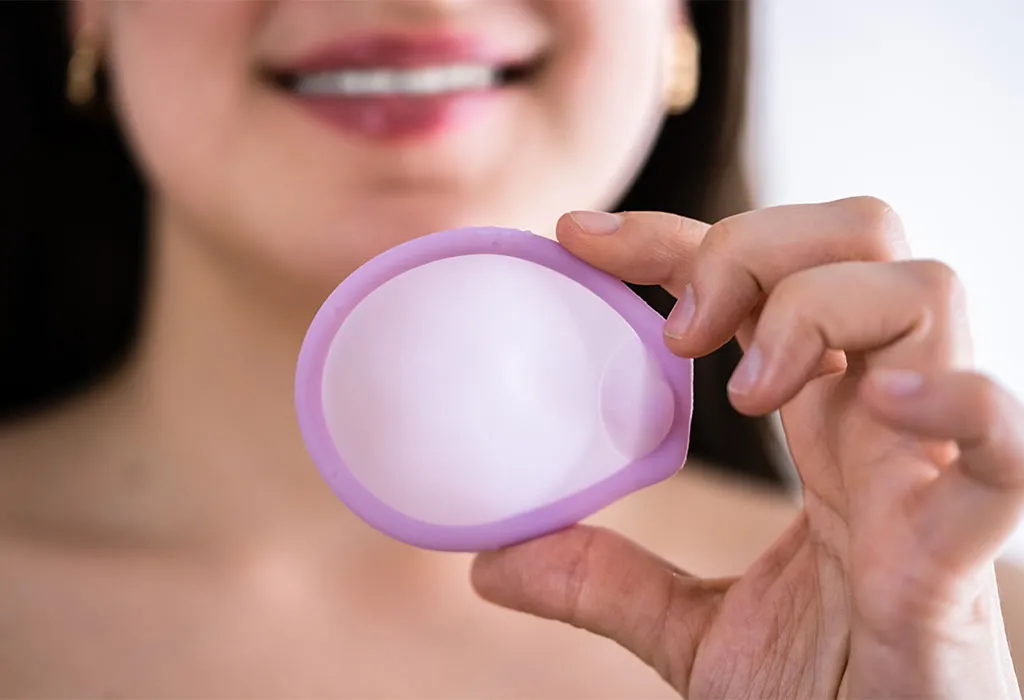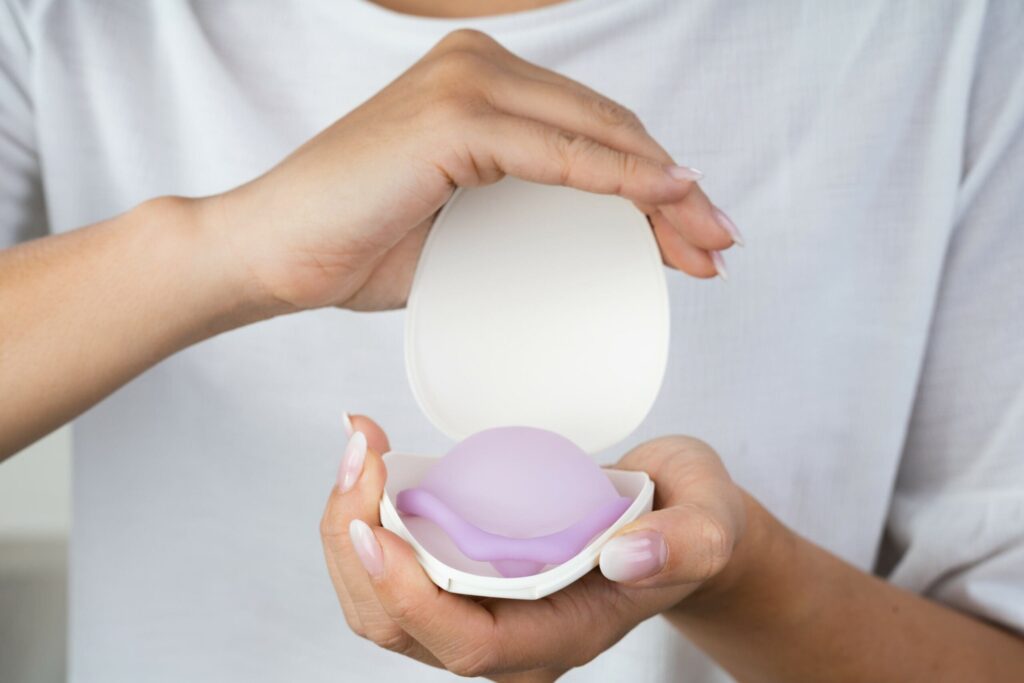What Is a Diaphragm Contraceptive?
So, let’s start with the basics. A diaphragm is a soft, dome-shaped device made from silicone, rubber, or latex, designed to be inserted into the vagina to prevent pregnancy. It works by covering the cervix (the entrance to your womb), which blocks sperm from entering and reaching an egg. Now, the diaphragm is not used alone – you’ll need to use it with a spermicidal gel or cream. This gel helps kill any sperm that might come in contact with it.
Is the Diaphragm Safe?
Yes, it’s very safe for most women! But just like any birth control method, it’s important to be mindful of your body and any changes you might feel. If you experience discomfort, itching, or unusual discharge, it’s best to talk to your doctor. But in general, the diaphragm is considered one of the safer options when used correctly.
How Does Diaphragm Contraceptive Work?
It’s pretty simple once you get the hang of it. When you insert the diaphragm before having sex, it creates a barrier that prevents sperm from entering the cervix. The spermicidal gel you use with it adds extra protection, ensuring that sperm are killed before they can cause pregnancy.
How Effective Is a Diaphragm Contraceptive?
If used correctly, the diaphragm is around 94% effective at preventing pregnancy. But this number can drop if it’s not used every time, or if you don’t apply the spermicide correctly. To make it even more effective, you could also use a condom alongside the diaphragm, which helps protect you from both pregnancy and sexually transmitted infections (STIs).
Who Should Opt for a Diaphragm?
Anyone who wants a non-hormonal, user-controlled birth control method can try the diaphragm. It’s especially great for women who want to avoid the side effects of hormonal methods like the pill. However, if you have a medical condition such as a vaginal infection, UTI, or an unusually shaped cervix, you might need to explore other options. A quick visit to your doctor can help you decide if the diaphragm is right for you.
How to Insert a Diaphragm?

Inserting a diaphragm isn’t as complicated as it sounds, but it does take a little practice. Here’s how you do it:
- Wash your hands thoroughly with soap and water.
- Apply the spermicide (the gel or cream) on the diaphragm.
- Position yourself: You can either stand, squat, or lie down – whatever feels comfortable.
- Insert the diaphragm: Fold it in half, then gently insert it into your vagina with the dome side facing downwards.
- Tuck it in place: Use your finger to slide the rim behind your pelvic bone. You’ll know it’s in the right place if it covers the cervix.
You can place the diaphragm in up to two hours before having sex. And remember – if you’re having sex later than that, you should reapply the spermicide. Once it’s in, you don’t have to worry about it until after sex.
How to Remove a Diaphragm?
After sex, you’ll want to remove the diaphragm after about 6 hours, but no later than 24 hours. Here’s how:
- Hook a finger over the rim of the diaphragm to break the suction.
- Gently pull it out. It should come out smoothly, but don’t rush.
How to Take Care of the Diaphragm?
Taking care of your diaphragm is pretty easy:
- Clean it after every use with mild soap and warm water.
- Let it dry thoroughly before storing it in a clean, dry place.
- Avoid using powders or oils, as these can damage the material.
- Store it away from direct sunlight and heat.
- Always check it for any cracks or tears before each use.
Where Can You Get a Diaphragm, and How Much Does It Cost?
You can get a diaphragm at most pharmacies or health centers, but you’ll need a prescription from your doctor or nurse. This is because it’s essential to find the right size for you. Typically, a diaphragm in India costs around ₹50. You’ll also need spermicide, which can cost you about ₹500.

Advantages of Diaphragm Contraceptive
There are a lot of perks when it comes to using a diaphragm:
- You can insert it up to two hours before sex.
- It’s a non-hormonal method, so it won’t mess with your body’s natural cycles.
- It’s user-controlled – you don’t need your partner’s involvement to use it.
- It’s very affordable and lasts for years, so it’s a cost-effective choice in the long run.
- It doesn’t interfere with your menstrual cycle.
Disadvantages of Diaphragm Contraceptive
While the diaphragm has many benefits, there are also some things to consider:
- It can be a bit messy when using spermicide.
- You need to use it every time you have sex.
- Some women might experience allergic reactions to latex or the spermicidal gel.
- It could cause some irritation in the bladder or increase the risk of UTIs.
- It may not be the most convenient option for women who aren’t comfortable inserting it.

Can You Use a Diaphragm After Pregnancy?
Yes, you can use a diaphragm after childbirth, but it’s usually best to wait about 6 weeks for your body to recover. During this time, your doctor will help you figure out if the diaphragm is right for you and whether you need a new one due to changes in your body size.
How to Know When You Need a New Diaphragm?
A diaphragm typically lasts for 2 years if it’s in good condition. But, if you notice any tears or cracks, or if your body has gone through changes (like weight gain or childbirth), it’s time to get a new one.
Can You Use a Diaphragm During Your Period?
It’s not recommended to use a diaphragm during your period, especially if you’re experiencing heavy bleeding. Using it during menstruation can increase the risk of toxic shock syndrome, a rare but serious condition.
Final Thoughts on Diaphragm Contraceptive
The diaphragm is a safe, affordable, and non-hormonal birth control option for many women. While it requires some practice to use correctly, it can be an excellent choice for those who want a reliable, user-controlled method of contraception. If you’re unsure whether it’s right for you, talk to your doctor for advice and a proper fitting.
Disclaimer:
The information provided in this blog post is intended for educational and informational purposes only. It is not a substitute for professional medical advice, diagnosis, or treatment. We recommend that you consult with a healthcare provider or doctor before making any decisions regarding contraception or any other medical matters. Always seek the advice of your doctor or other qualified health provider with any questions you may have regarding a medical condition.
Also Read :
Comprehensive Guide to Understanding Health Insurance
5 Best Yoga Poses for Pregnancy: Instant Relaxation at Work
Role of Zygote in Fetal Development




Pingback: 7 Most Reliable Non-Hormonal Birth Control Methods for Women
Pingback: How to Boost Your Chances of Getting Pregnant Naturally – Expert Tips for Every Couple
Pingback: Boost Your Chances of Conceiving Naturally: Expert Tips for Parenthood
Pingback: Polycystic Ovarian Syndrome (PCOS) in India – Symptoms, Causes, & Pregnancy Guide